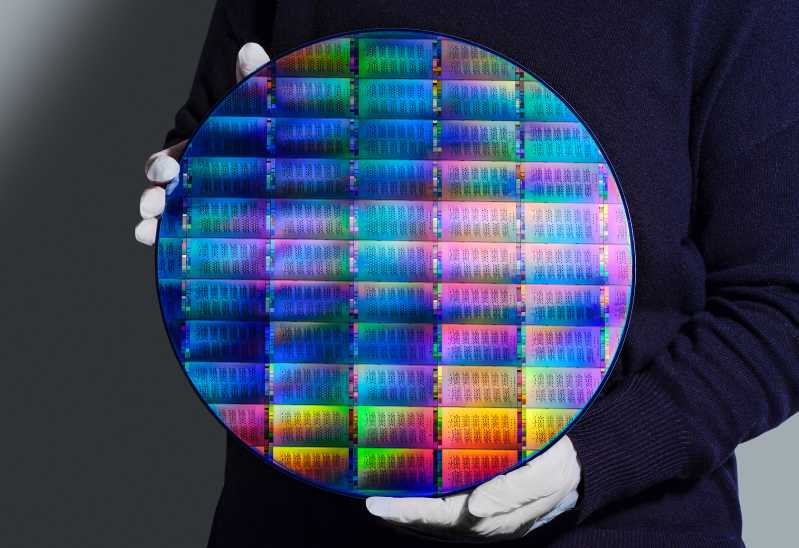Copyright TechStartups.com

IBM announced the Quantum Nighthawk processor, featuring 120 qubits and 218 tunable couplers, enabling 30% more complex circuits. The chip is expected to reach users by late 2025 for applications ranging from drug discovery to materials science. The company also unveiled the experimental Quantum Loon processor, which integrates long-range couplers and qubit-reset technology to improve error correction using adapted parity-check codes on hybrid systems. IBM projects verified quantum advantage by 2026 and fault-tolerant quantum computing by 2029, with future chips built on 300mm wafers at the Albany NanoTech Complex to scale production. To understand why this matters, it helps to step back for a moment. Unlike conventional computers that store information using bits represented by 0s or 1s, quantum computers use quantum bits, or qubits, which can exist as 0s, 1s, or both at the same time. This property—known as superposition—allows quantum machines to process enormous amounts of data simultaneously. Scientists believe these systems could eventually perform complex calculations millions of times faster than today’s most advanced supercomputers. That’s the promise IBM is chasing. The new Nighthawk and Loon processors aren’t just incremental upgrades—they mark key progress toward making quantum computing practical and reliable. Nighthawk pushes the boundaries of current hardware, edging closer to outperforming classical computers on real-world problems, while Loon demonstrates progress in quantum error correction, a crucial step toward building stable, large-scale quantum systems. “There are many pillars to bringing truly useful quantum computing to the world,” said Jay Gambetta, Director of IBM Research and IBM Fellow. “We believe that IBM is the only company that is positioned to rapidly invent and scale quantum software, hardware, fabrication, and error correction to unlock transformative applications. We are thrilled to announce many of these milestones today.” Nighthawk, IBM’s most advanced processor yet, delivers 120 qubits connected through 218 next-generation couplers—over 20% more than its predecessor, Heron. This higher connectivity allows circuits of greater complexity while maintaining low error rates. The chip is designed to execute up to 5,000 two-qubit gates, a key metric for quantum computation. IBM expects later Nighthawk iterations to expand to 7,500 gates by 2026, 10,000 by 2027, and as many as 15,000 by 2028 through the use of long-range couplers connecting more than 1,000 qubits. To ensure transparency around progress, IBM and partners including Algorithmiq, BlueQubit, and researchers at the Flatiron Institute launched an open “quantum advantage tracker.” The initiative lets the broader research community verify experimental claims of quantum advantage across several categories of problems. “The model we designed explores regimes so complex that it challenges all state-of-the-art classical methods tested so far,” said Sabrina Maniscalco, CEO and co-founder of Algorithmiq. BlueQubit CTO Hayk Tepanyan added that their work is helping “formalize instances where quantum computers are starting to outperform classical computers by orders of magnitude.” IBM’s quantum software stack, Qiskit, is evolving in step with the hardware. It now offers finer control over dynamic circuits, delivering a 24% accuracy boost at scales beyond 100 qubits. The company also introduced a C-API interface to connect Qiskit with high-performance classical computing systems, reducing the cost of error mitigation by more than 100 times. IBM plans to expand Qiskit further by 2027 with computational libraries for machine learning and optimization—particularly for physics and chemistry problems such as Hamiltonian simulations and differential equations. Alongside Nighthawk, IBM introduced its experimental Loon processor—a prototype aimed at realizing large-scale error correction. Loon incorporates new multilayer routing for long-range couplers that link distant qubits on the same chip and supports qubit resets between computations. IBM has already demonstrated real-time error decoding in under 480 nanoseconds using qLDPC codes on classical hardware, achieving that milestone a full year ahead of schedule. Together with Loon, these advances mark the foundation of fault-tolerant quantum architectures built on superconducting qubits. IBM’s hardware push is supported by a shift to 300mm wafer fabrication at the Albany NanoTech Complex in New York. The upgrade has doubled the pace of R&D, cut chip development time in half, and enabled parallel design testing. According to IBM, this transition allows for faster learning cycles and improved performance across qubit density and interconnect complexity. With Nighthawk advancing near-term performance and Loon pioneering fault-tolerant design, IBM is positioning itself to deliver practical quantum computing within the decade—a vision that, if realized, could redefine how industries model chemistry, optimize logistics, and simulate materials at the atomic scale.



